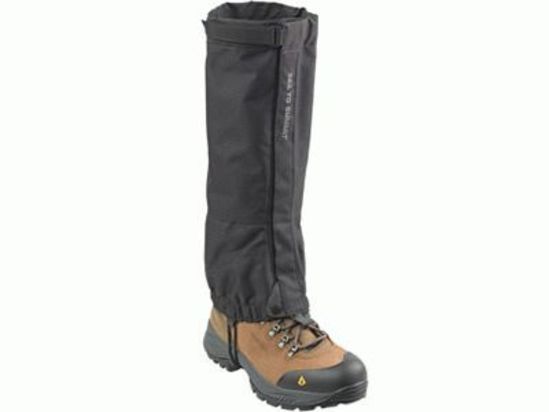Hiking Gaiters – which ones, when and where

Hiking Gaiters – which ones, when and where
Posted on
If I say hiking gaiters, do you think of large reptiles walking through the Florida everglades?
If so, you definitely need to read this guide.
Depending on where you are from, hiking gaiters are either essential gear or bothersome annoyance. It probably doesn’t surprise you though, that there are different types and what is important is choosing the right gaiter for the walk. I have done walks before with the wrong gaiters and it is horrible. Enough to turn me off them forever.
Here is what I have learned.
Firstly, what is a hiking gaiter? Why wear them?
Gaiters are garments that wrap around the lower leg. Often, they go over the actual boot and attach into the laces with a hook. Gaiters were originally made for protecting horse back riders leg’s against the constant rubbing of stirrups and and other saddle parts but subsequently used by infantrymen in the army.
Interestingly gaiters are part of the standard garb for Anglican Bishops! As Bishops were in charge of large areas, back in the day they were often visiting their congregation on horseback and needed the protection of gaiters. Nowadays the gaiters are purely symbolic.
Hikers use gaiters for a number of reasons.
- prevent cuts and scratches
- stop mud getting on to the pants
- prevent sand from going in to the boots
- stop rain/water from filling up the boots
- protect from snake bites
- to look really cool… maybe not.
Different Types of Hiking Gaiters
In my experience, hiking gaiters come in a few main types.

Nylon, cheap and sweaty – These are reasonably priced, maybe $30-$50 for a pair and provide excellent protection. However, unless you are going to be in cold conditions, you will wish you had spent more. The nylon hiking gaiters don’t breath at all. Consequently, the hiker will sweat like no one’s business.
It really needs to be less than 15 degrees for these to be comfortable. I have used these walking at Lake St Clair in Tasmania on a cold day and they were great. I have also used them whilst walking the Bibbulmun Track and they were hot enough for me to cook a couple of crayfish!

Canvas, more expensive but breathable – The canvas gaiters are typically heavier, more expensive but they are much more breathable, meaning you can wear them in a greater range of temperatures. They are still warm, but you won’t sweat as much in these in mild conditions. You will pay anywhere from $70-$130 for a good quality pair of canvas gaiters, but if you are walking through spinifex in the Pilbara, you will be glad you have them.

Sock protectors – Check out these fashionable items! This style of gaiter barely goes over the ankle, but they are used to stop sand and seeds getting in to your boots/socks. You can pick up the lawn mowing cloth gaiters for just a few dollars at Woolworths or Bunnings. Or you can find some fashionable ones like those pictured for about $14.
On the Cape to Cape or Great Ocean walk, these types of gaiter are excellent. Every time your back foot passes your front, you will spray a few dozen grains of sand into your socks and these little guys will stop you from being a sandbag. Hurray!
A point about snakes and hiking gaiters
We often have people ask if they should wear gaiters to protect against snake bites. If you are struck by a snake in the Australian bush, you are definitely going to wish you were wearing gaiters. Chances are, the snake was highly venomous and the gaiter will definitely stop the snake from puncturing the skin.
Just bare in mind however, that it is really difficult to be bitten by a snake in Australia unless you are trying to catch it. There is a mis-conception about our snakes. Sure, the venom is often highly toxic but they are very shy creatures and did you know that Australian snakes have tiny fangs. In most cases only 3mm! A pair of light weight pants and some thick socks will provide enough protection in most cases. Also, it has been proven that our snakes will only inject venom in one in ten “defensive bites”.
As I said before, if you are bitten by a snake, you will wish you were wearing hiking gaiters. However, if you follow good snake protocol whilst out hiking, the chances of being bitten by these shy and non-aggressive creatures are virtually zero.



